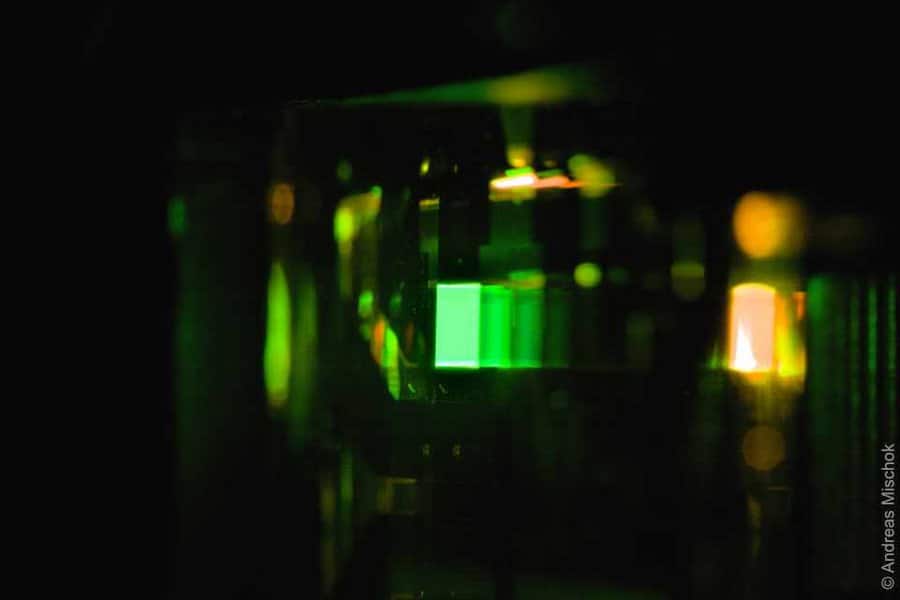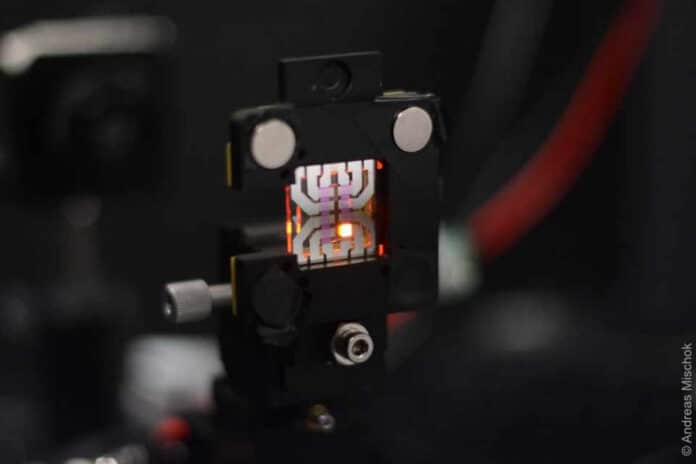In recent years, organic light-emitting diodes (OLEDs) have dominated the display market, from high-resolution smartphones to televisions the size of walls. However, industry and science must overcome several obstacles to develop the next generation of devices with even higher color saturation, brightness, and efficiency.
The organic compounds used to create OLEDs have naturally broad emission spectra; this characteristic limits the range of colors and saturation used in high-end displays. To get around this problem, color filters or optical resonators can be employed to limit the emission spectra of OLEDs artificially. Unfortunately, this reduces efficiency or causes the perceived color to be strongly influenced by the viewing angle.
Researchers at the two universities- the University of Cologne (Germany) and the University of St Andrews (Scotland) – have now shown that a fundamental scientific principle can be used to boost the color brilliance of smartphones, computers, or TV screens without cutbacks in energy efficiency.
According to them, the principle- the strong coupling of light and matter – can change the emission spectra of OLEDs while avoiding the change of color at oblique viewing angles.
Exciton polaritons are produced when photons (light) and excitons (matter) demonstrate sufficiently strong contact with one another. The idea is similar to how energy is transferred between two connected pendulums, except that matter and light are couplings and continuously transfer energy in this case.
These polaritons eventually emit light again. The coupling between light and organic material can be significantly improved by embedding the entire layer stack of the OLED between thin mirrors made of metallic materials, which are already widely used in the display industry. Until now, however, strong coupling in OLEDs has inevitably led to low electrical efficiency.
Researchers avoided this by adding a separate thin film of strongly light-absorbing molecules similar to those already used in organic solar cells but not in OLEDs. This addition boosted the strong coupling’s effect without diminishing the efficiency of the light-emitting molecules in the OLED.
Dr. Andreas Mischok, the first author of the study, said, “By generating polaritons, we can transfer some of the advantageous properties of matter to our OLEDs – including their significantly lower angular dependence so that the color impression of a display remains brilliant and stable from any perspective.”

“Although polariton-based OLEDs have been reported on in the past, their energy efficiency and brightness have been low. This has prevented practical applications and kept them mainly confined to basic research. With the new strategy, the team has now successfully realized polariton-based OLEDs at efficiency and brightness levels suitable for practical application for the first time.”
Professor Malte Gather, who led the study, believes: “With efficiency and brightness comparable to OLEDs that are used in commercial displays, but with significantly improved color saturation and color stability, our polariton-based OLEDs are of great interest to the display industry.”
“The on-demand and efficient production of a large number of polaritons is not only relevant for the next generation of displays but can also be used for a wide range of other applications – from lasers to quantum computing.”
Journal Reference:
- Mischok, A., Hillebrandt, S., Kwon, S. et al. Highly efficient polaritonic light-emitting diodes with angle-independent narrowband emission. Nat. Photon. (2023). DOI: 10.1038/s41566-023-01164-6
